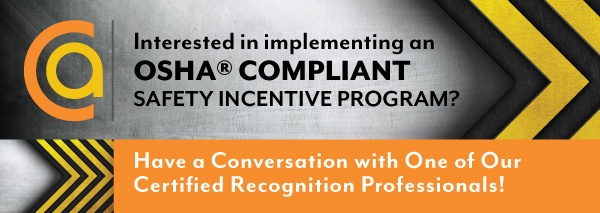2022 National Safety Month: 5 Strategies to Create a Safer Workplace

The National Safety Council observes National Safety Month every year in June. The annual observance is to help keep each other safe in the workplace.
It also serves as a reminder of the importance of creating a Culture of Safety in the workplace. It has been shown that positively overhauling the safety culture within your organization improves safety performance among your employees.
But what are some of the best strategies you can apply right now to understand what your company’s culture requires to inspire the best safety performance?
6 Strategies to Create a Safer Workplace
1. Examine Leading and Lagging Indicators
Metrics that indicate past performance – or lagging indicators – have historically provided companies with an after-the-fact, "days since last safety incident" mentality. This data is important, of course, but only addresses one side of the matter.
Instead of waiting for an incident to occur, you can take the reins by preventing future incidents from occurring altogether. Use leading indicators as a prerequisite to safety by identifying unsafe conditions and near-misses before they happen.
2. Provide Frequent Feedback and Training to Bolster Employees’ Efforts
Annual performance reviews should be a thing of the past.
One-and-done training – such as employees participating in a single safety seminar or receiving unsupported printed information – yields exceedingly low engagement and safety results.
Recognizing employees monthly versus annually has proven to be the most effective way to achieve positive results.
What works is providing a safety training program that is both ongoing and interactive, and one that rewards employees for their safety efforts.
Recognize employees each month for leading indicators such as:
- Safety Suggestions
- Safety Audits
- Reporting Near Misses
- Proper Use of PPE
Having ongoing conversations, coaching “moments,” and leading by example will help contribute to higher quality interactions with your employees. Letting them know they’re doing great and uplifting them when they are not, will help build the foundation needed to create a safer workplace.
3. On-The-Spot Recognition
It’s important that employees are recognized for their safety successes right when they occur. Waiting for a bonus or special ceremony to congratulate a worker's efforts are often undermined, as the employee may not remember the specific task for which they're being rewarded
On the flip side, creating an effective Culture of Safety subsists in rewarding instant values-based recognition for your top safety performers.
4. Consider Adding a Wellness Program for Your Workers
A healthy worker is a happy worker. And a happy worker is best prepared for tackling important safety issues as they occur.
An investment in a wellness program can reap dividends in the form of energized, safety-minded workers engaged with completing their tasks in correct and healthy ways. Rising healthcare and insurance costs can be detrimental to the bottom line. Healthy, fit, and engaged employees miss less work, get hurt less, and cause less accidents, efficiently contributing more to the goals of the organization.
5. Create an OSHA-Compliant Safety Incentive Program
Safety incentive programs reinforce safety protocols and encourage employees to work safely by rewarding them when they do. To build a successful safety incentive program, you must have a way to consistently measure success, as well as discover any areas of improvement.
OSHA® encourages employers to find creative ways to incentivize safe work practices and accident-prevention measures. C.A. Short Company presents a new way of OSHA® Compliance with Safegagement™.
Safegagement™ occurs when engaged employees are safer at work and make better decisions because they care about those they work with, the company they work for, and the overall accomplishments of the organization. With a safety incentive program, you will raise engagement, reduce accidents, and increase your bottom line.
Our behavior-based programs can assist you in measuring and awarding employees for leading indicators. KPIs vary by industry, but it is important to create measurable KPI’s that are credible and predictive. C.A. Short uses a Shared Risk Shared Reward Model, meaning you only purchase points for your program when goals and KPIs are accomplished.
